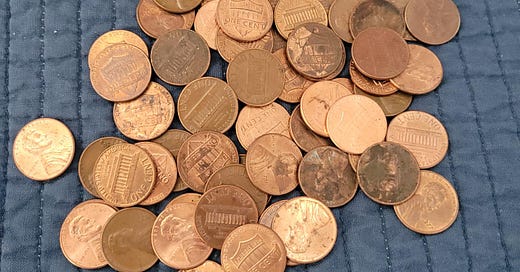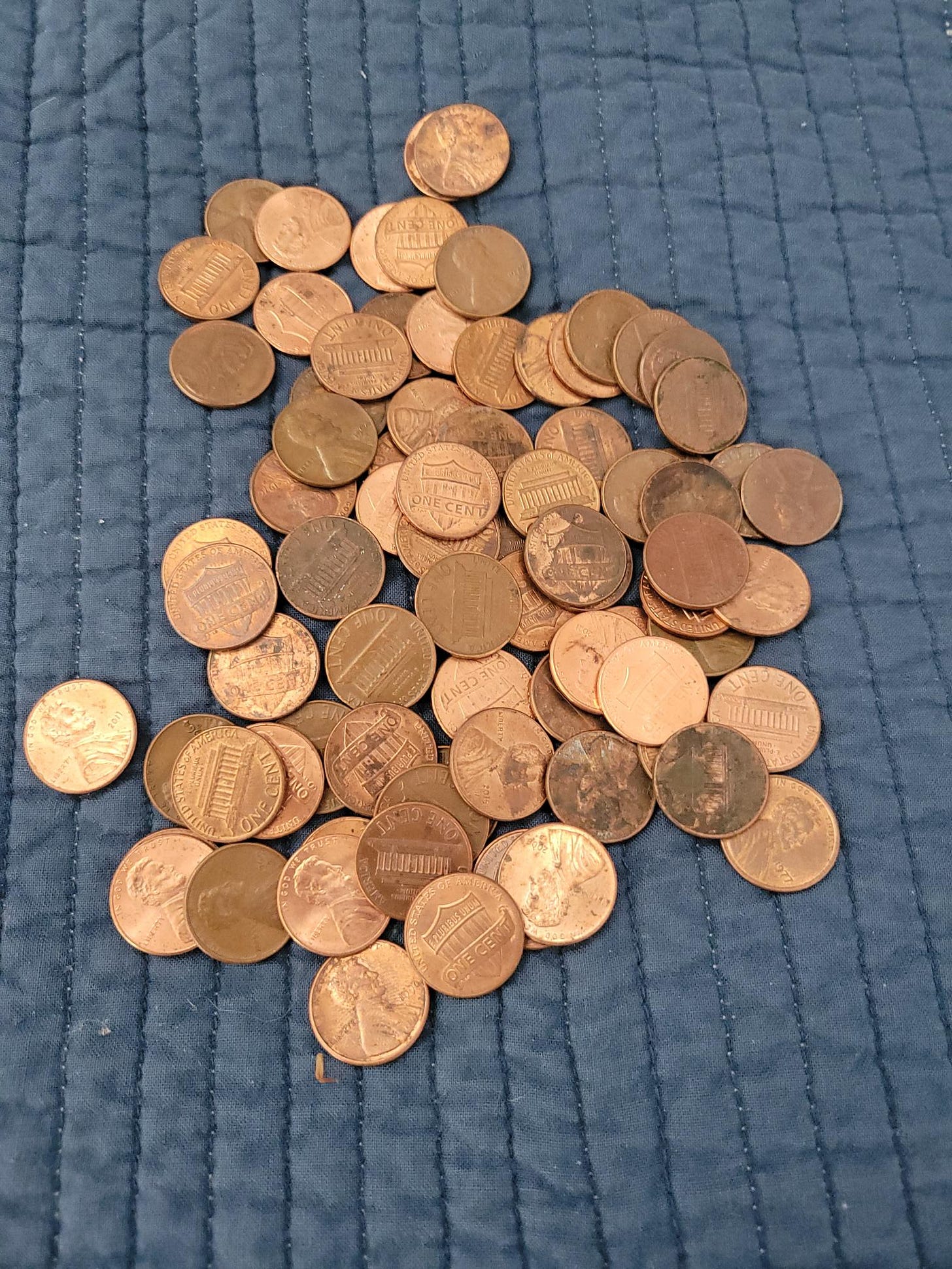The saying “a penny for your thoughts” has been around since the 1500s.
The expression will outlast the one-cent piece, it appears. Early next year, the United States Mint will stop manufacturing pennies. The day will come when there will be no more loose coins in our pockets, in random coin jars, beneath couch cushions and in other random spots.
I have no great sentimental fixation on the penny, though in February 2002, the coin played a central role in a story I wrote about a Chicago suburb’s questioning whether to update its parking meters. At that time, those meters accepted pennies—one cent provided a whopping 12 minutes of parking, a relevance that was a novelty even then.
For my reporting, I spoke with folks from Penny Lovers of America and Americans for Common Cents (ACC). Mark Weller of ACC estimated that dumping pennies would result in a $600 million “rounding tax” nationwide, as merchants simply raised prices incrementally.
“The penny is a real hedge to inflation,” he argued.
The Penny Lovers’ founder, Dick Barber, likened pennies to comedian Rodney Dangerfield: “they get no respect,” he said.
Barber passed away in 2020 and Penny Lovers appears to have disbanded, while Americans for Common Cents, which “conducts research and provides information to Congress and the Executive Branch on the value and benefits of the penny,” remains online at www.pennies.org.
ACC hasn’t made a compelling case lately, apparently, even though it points to polling over the years that suggest two-thirds of Americans favor keeping the penny. (What say you? Check out the poll below.)
On its face, dropping the penny seems to make sense, as making these cents costs more than their face value. But hold on. According to ACC, in its Frequently Asked Questions section:
“The government won’t save money if the penny is eliminated. Such a change would have a massive negative impact on the U.S. Mint’s cost structure. For example, many Mint overhead costs would remain and have to be absorbed by other coins. Also, there would be greater demand for expensive nickels which also means more costs. The unit cost to make a nickel in 2023 was 11.54 cents, which is more than double the face value of the nickel itself. The Mint says penny elimination will likely double nickel production so the Mint will lose money making more nickels at the current cost.”
Regardless, the penny’s days appear to be numbered, though with so many in circulation you’ve got to wonder how long it will be before they fall entirely out of everyday use.
For years, my wife and I have accumulated loose change—pennies, nickels, dimes and quarters—in a small vase, then converted it to cash whenever it fills up, maybe twice a year. We’re due to take it to the bank any time now and I just checked to see how many pennies have gotten into the mix: 79.
Whoop-dee-doo.
In the end, with all due respect to the memory of Abraham Lincoln whose profile appears on the one-cent piece, I support the eradication of the penny. (Honest Abe will still be a fixture in everyday commerce, via the $5 bill.)
To any individual or organization emphasizing the impact that small deeds can make, it’s time to increase the unit of measure five-fold to the nickel, which, by the way, is on par today with 1978’s penny when factoring in inflation.
Some more inflation-adjusting context:
A penny in 1800 was worth the equivalent of 25 cents today; even in my lifetime, a penny I clutched in my 5-year-old hands in 1973 was like having seven cents today—that’s real money for a kindergartener.
Today? Their continuation would be penny-wise, but pound-foolish.







Back in the 1990s when I was a reporter in the Upper East Tennessee area, I did a story on the plant in Greene County that produces zinc blanks for the US Mint. The plant employs about 250 workers in an county that voted heavily for Trump. The plant management says they hope to move employees into other productions but there are no guarantees. I wonder how they feel now about their vote.
But (and your link confirms this) I think the reason the penny has finally been sunset is just that Trump declared he wanted it, and now the Republicans are lining up for it. And, as this is not a super-serious topic, what prompted Trump was probably just something he saw on television. He dictates all aspects of our life -- movies, sports, culture, beyond the more normal economic one as well.
Thanks for the post!